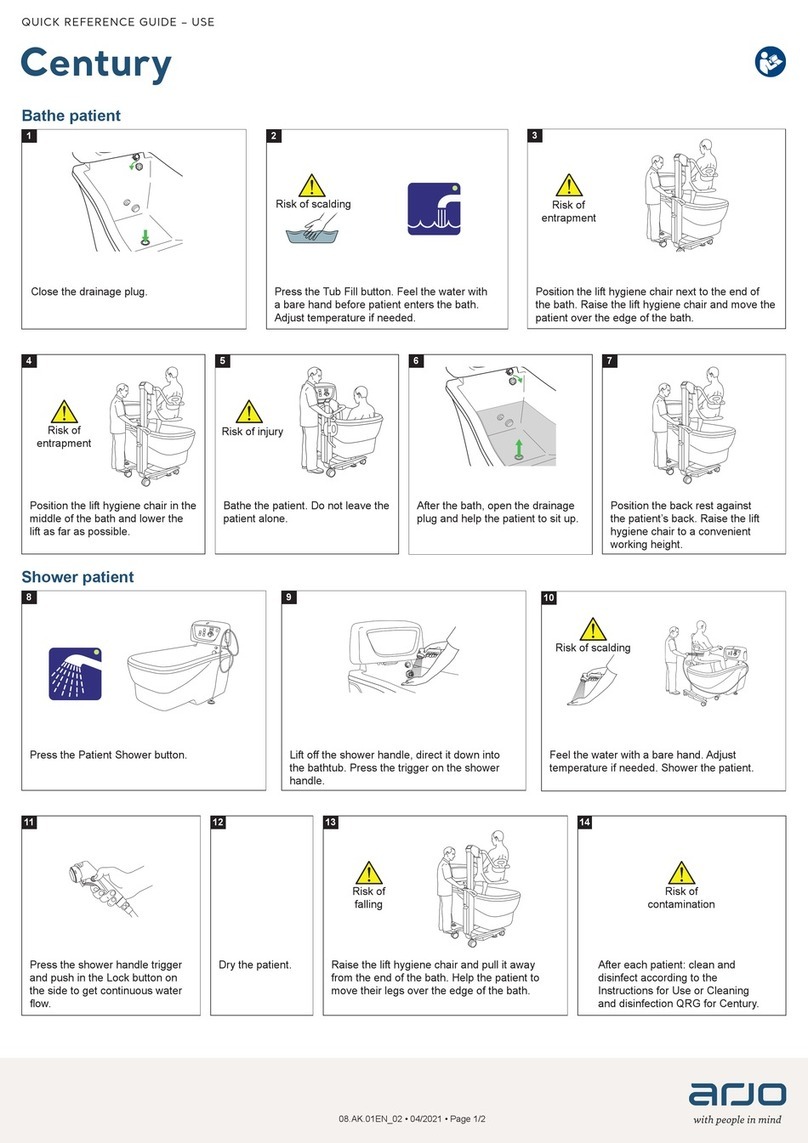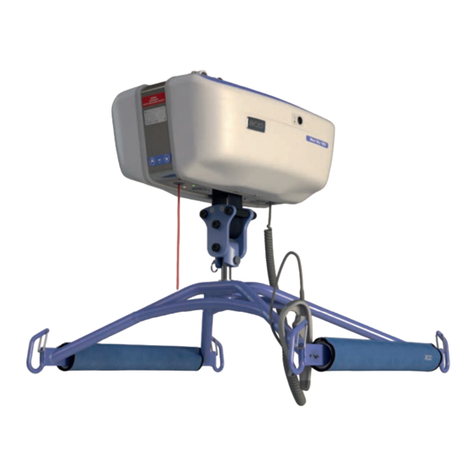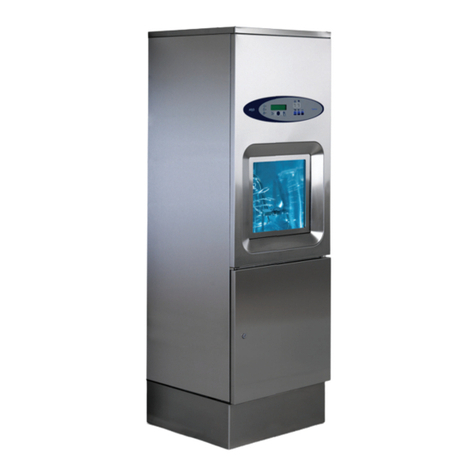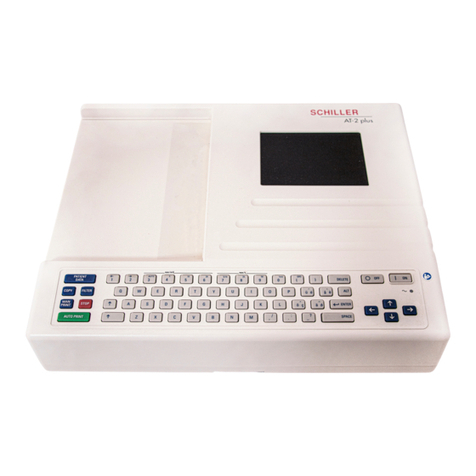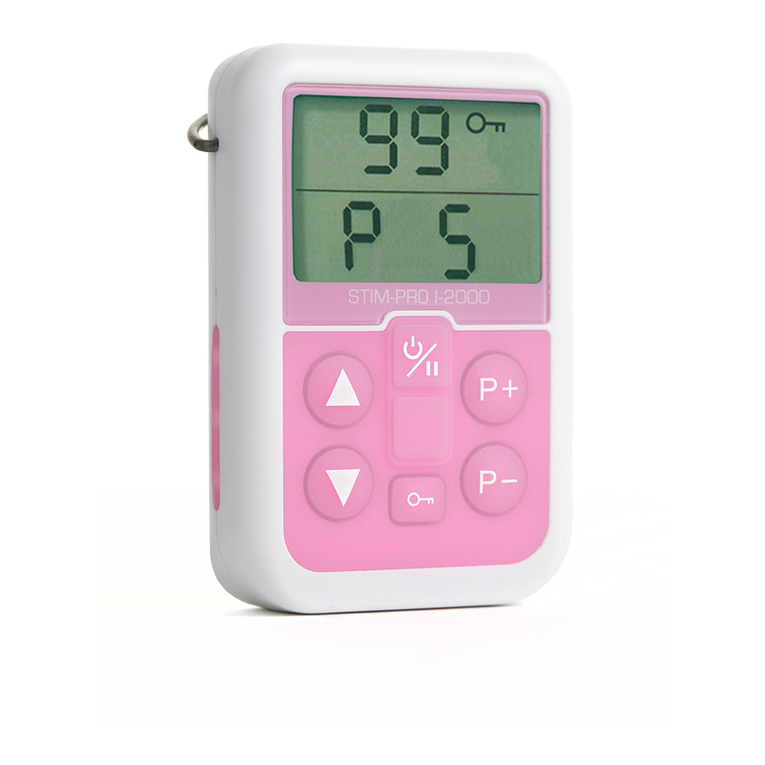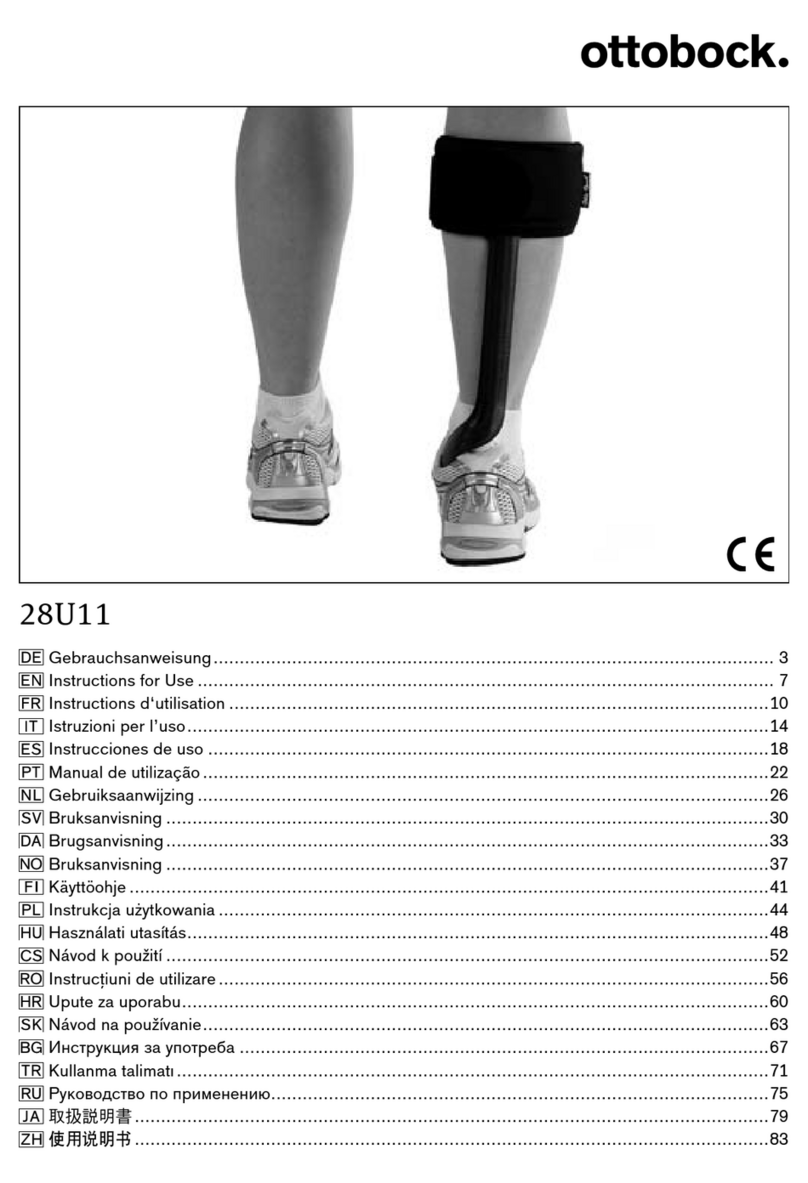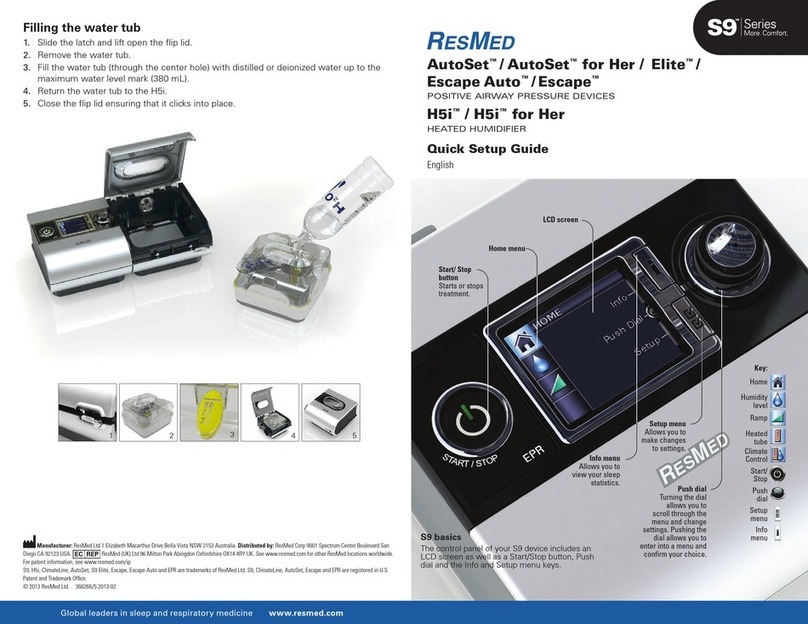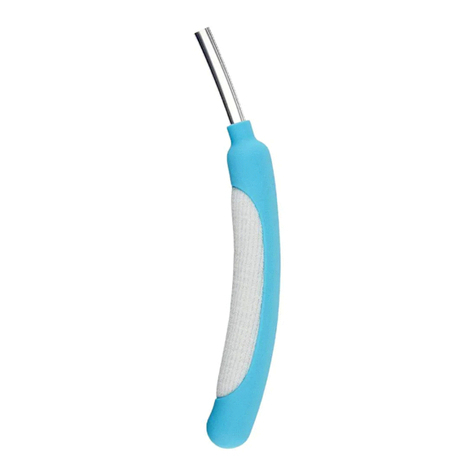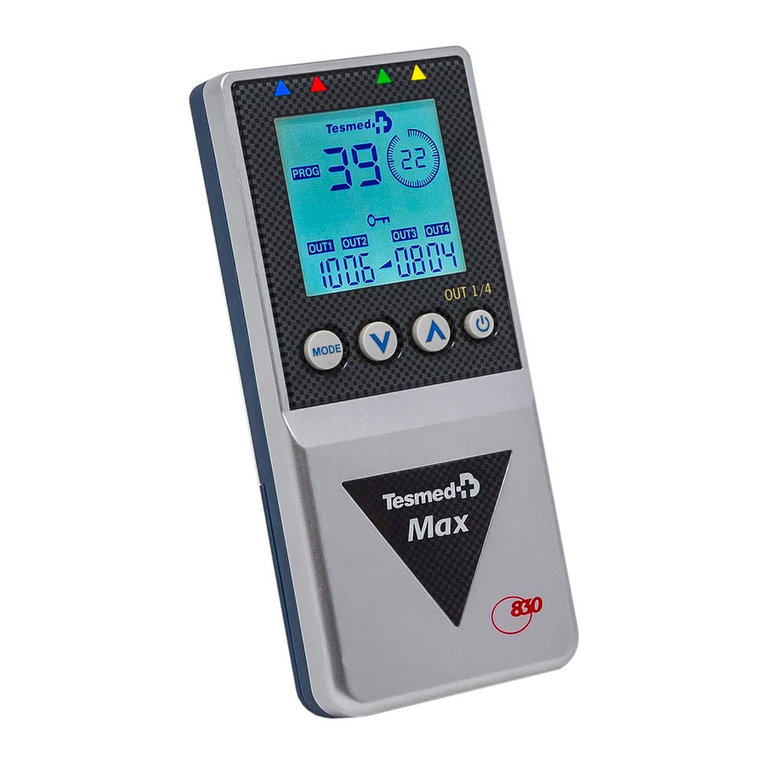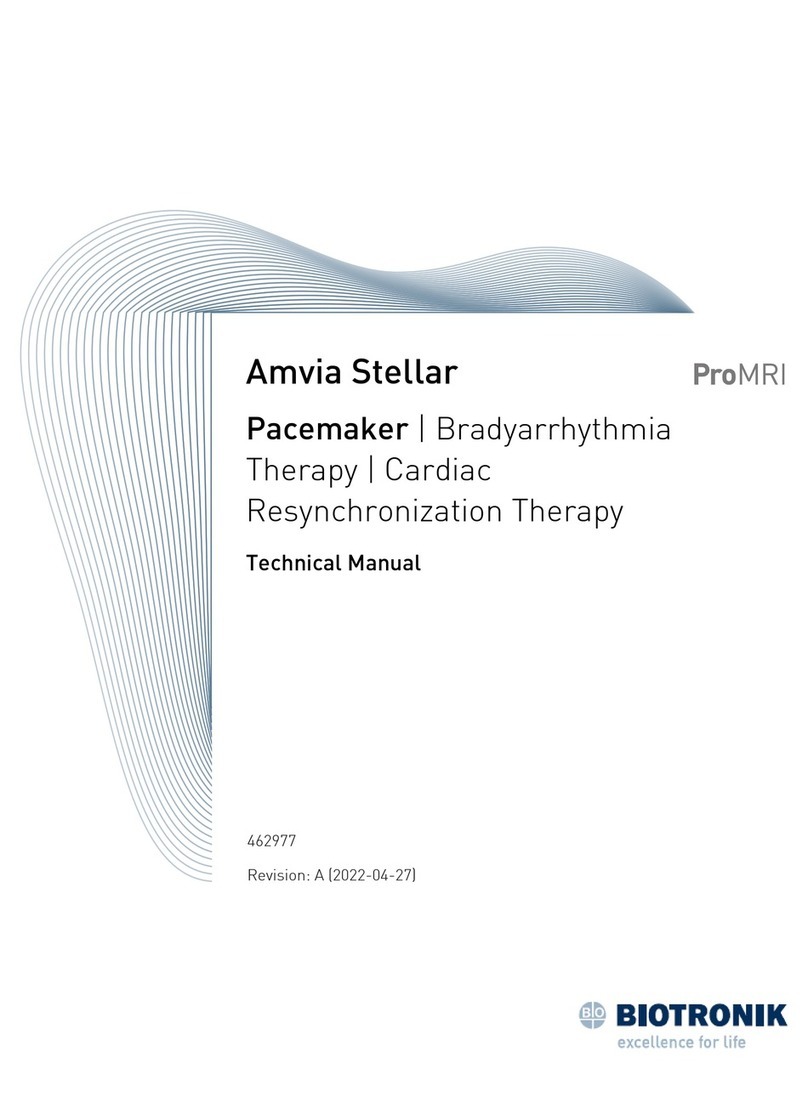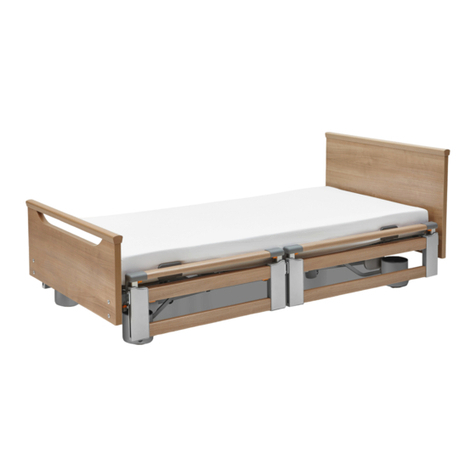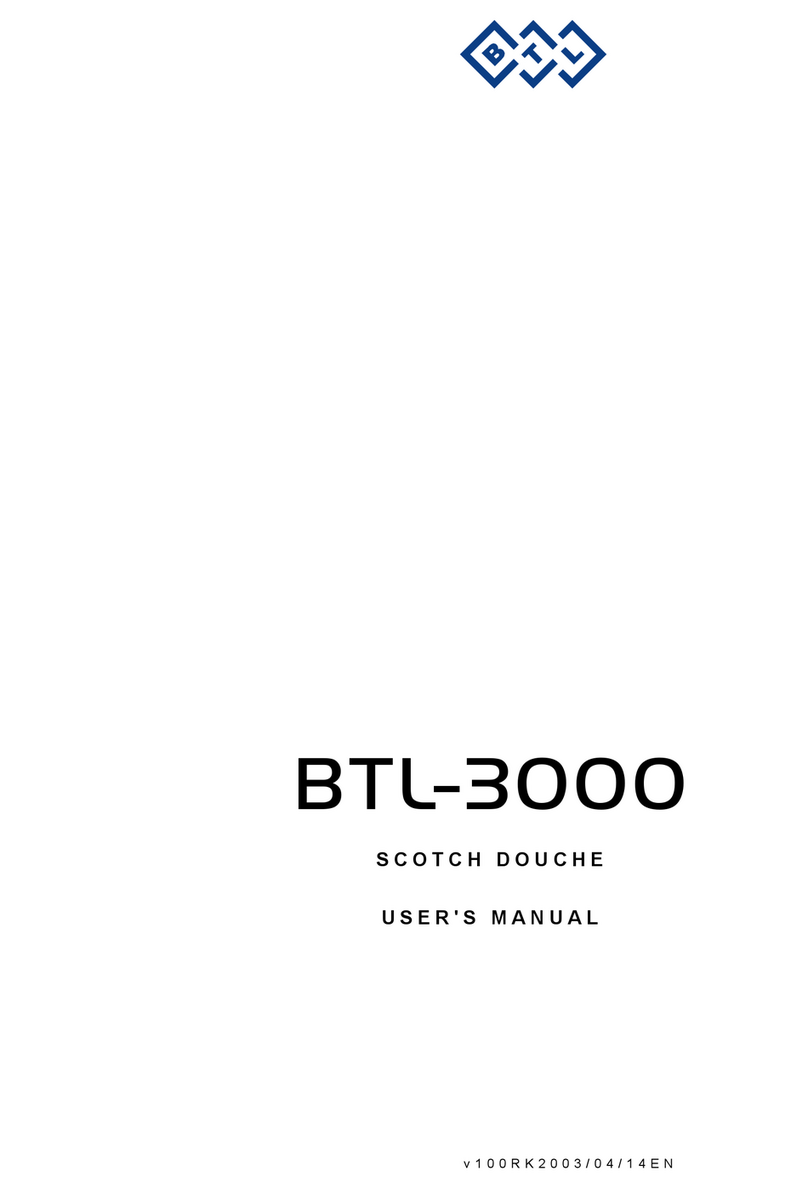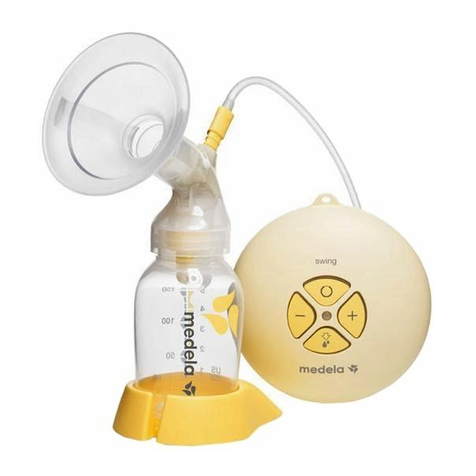Arjo First Spet Select User manual

For questions regarding this product, supplies, maintenance or additional information about Arjo products
and service, please contact Arjo or an Arjo authorized representative, or see www.arjo.com.
SPECIFICATIONS
ALERTS
INTRODUCTION
QUESTIONS AND INFORMATION
® and ™ are trademarks belonging to the Arjo group of companies. © Arjo 2019.
215234-AH Rev 4 09/2019
The First Step®Select Therapy System is a pressure relieving overlay or mattress
replacement system (MRS) designed to suspend the patient on a low air-loss support
surface, providing effective pressure redistribution and prevention and treatment of
pressure ulcers.
The support surface is constructed of a nylon fabric with moisture vapor permeable
backing. The overlay is divided into three sections: HEAD, BODY and LEG, each section
can be individually adjusted to meet patient specific needs. The therapy control unit
consists of a single variable speed blower with warmer to provide adjustable air tempera-
tures for patient comfort.
Indications
The First Step Select (FSS) Therapy System is indicated for patients who would benefit
from a pressure redistribution surface assisting in the prevention and treatment of
pressure ulcers (Stages I-IV).
Contraindications
Patient conditions for which the application of pressure redistributing therapy on the First
Step Select Therapy System are contraindicated include:
• Unstable spinal cord injury.
• Unstable vertebral fracture.
• Cervical traction.
Risks and Precautions
Transfer - Precaution should be taken during patient transfer, including the locking of
caster brakes and deflation of overlay surface. Refer to Patient Transfer sections in the
Patient Placement and Nursing Care chapters of the user manual.
Side Rails and Restraints - Use or non-use of restraints, including side rails, can be
critical to patient safety. WARNING: Serious or fatal injury can result from the use
(potential entrapment) or non-use (potential patient falls) of side rails or other restraints.
See related Safety Information.
Patient Migration - WARNING: As with all speciality bed products that are designed to
reduce shear and pressure on the patient’s skin, the risk of gradual movement and / or
sinking into hazardous positions of entrapment and / or inadvertent bed exit may be
increased.
Skeletal Traction or Unstable Fracture (if not contraindicated) - With skeletal traction,
unstable pelvic fractures or any other unstable fracture (to the extent not contraindicated),
maintain physician directed angle of articulation and guard against risks of patient
migration or inadvertent deflation of surface.
Oxygen Use - Danger: Risk of explosion if used in the presence of flammable anesthet-
ics. Use of this product’s therapy control unit in an oxygen-enriched environment may
produce potential of fire hazard. This equipment is not suitable for use in the presence of
a flammable anesthetic mixture with air or with oxygen or nitrous oxide.
Position therapy control unit only at foot end of bed when using oxygen administering
equipment.
Electromagnetic Interference - Although this equipment conforms with the intent of the
directive 89 / 336 / EEC in relation to electromagnetic compatibility, all electrical
equipment may produce interference. If interference is suspected, move equipment away
from sensitive devices or contact the manufacturer.
Shock Hazard - Electrical shock hazard, do not remove cover. Refer to qualified service
personnel.
- Also see SAFETY INFORMATION on reverse side -
INSTAFLATE™ automatically deactivates after 15 minutes.
• Screen will flash every 5 seconds for last 15 seconds before deactivation.
SEAT DEFLATE automatically deactivates after 15 minutes.
• Screen will flash every 5 seconds for last 15 seconds before deactivation.
Dimensions (Mattress inflated):
First Step Classic and Air Rail 82 in L x 35 in W x 5 in H / 208 cm L x 89 cm W x 13 cm H
First Step Cirrus 84 in L x 35 in W x 5 in H / 213 cm L x 89 cm W x 13 cm H
First Step Excel 82 in L x 35 in W x 7 in H / 208 cm L x 89 cm W x 18 cm H
Mattress Foam Base 82 in L x 35 in W x 3 in H / 208 cm L x 89 cm W x 7.6 cm H
NOTE: MRS foam base is optional with the First Step Classic MRS, First Step Cirrus and First Step Air Rail mattress
overlay.
Therapy Unit:
Dimensions: 12 in W x 10-3/4 in H x 7 in D / 30.5 cm L x 27.3 cm W x 18 cm H
Weight: 14 lb (6.4 kg)
Weight (Mattress inflated):
First Step Classic and Air Rail 2.9 lb (1.3 kg)
First Step Cirrus 7.5 lb (3.4 kg)
First Step Excel 4 lb (1.8 kg)
Mattress Foam Base 5 lb (2.3 kg)
Maximum Recommended Patient Weights:
First Step Classic and Air Rail 250 lb (113 kg)
First Step Cirrus and Excel 300 lb (136 kg)
Electrical:
Voltage 115 VAC
Frequency 60 Hz
Amps 6 Amps
Max Electrical Leakage 100 Micro Amps
Fuse F1 - 1.0A, 250 VAC
F2 - 6.3A, 250 VAC
Power Cord Length: 16 ft (4.9 m)
Specifications subject to change without notice
NOTE: This product is ETL classified in accordance with either or .
Refer to product labeling.
FSS Classic + MRS Pad = MRS
FSS Cirrus + MRS Pad = MRS
FSS AirRail + MRS Pad = MRS
FSS Excel = MRS
215234-AH Rev 4• 09/2019
This guide is not intended as a guarantee or warranty. This guide is
intended solely as a quick reference source and is not intended to
be a comprehensive guide. For medical questions, consult a
physician. For additional product information, consult an
Arjo representative. Refer to user manual.
ArjoHuntleigh AB
Hans Michelsensgatan 10
211 20 Malmö, Sweden
www.arjo.com
4008070
First Step Select
QUICK REFERENCE GUIDE
Therapy system
At Arjo, we are committed to improving the everyday lives of people
affected by reduced mobility and age-related health challenges. With
products and solutions that ensure ergonomic patient handling,
personal hygiene, disinfection, diagnostics, and the effective
prevention of pressure ulcers and venous thromboembolism, we
help professionals across care environments to continually raise the
standard of safe and dignified care. Everything we do, we do with
people in mind.

NOTE: Carefully review and follow all Risks and Precautions, Safety Information and
Contraindications (and all other aspects of this guide) before placing patient.
1. Install First Step Select unit.
• If using FSS unit as an overlay, typical for FSS Classic, FSS Cirrus and FSS Air Rail, retain
existing mattress.
• If using FSS unit as a mattress replacement system (MRS) typical for FSS Excel, remove
existing mattress.
2. Position FSS unit on bed frame with hose set at patient’s left foot of bed.
• Place therapy control unit on foot board.
• Connect air hoses to therapy control unit and MRS.
3. Install First Step Select Fabric Cover Sheet (optional for First Step Cirrus). First Step Cirrus
may be used with standard hospital cotton sheets.
4. Plug therapy control unit into wall outlet and press power switch to activate.
5. Press Instaflate™ to inflate cushions and create a firm surface for patient transfer.
6. Ensure wheel brakes and wheel steering are locked.
7. Transfer patient following all applicable safety rules and institution protocols.
8. Center patient on FSS surface. Patient’s sacrum should be centered head-foot on seat section
cushion.
9. Raise and lock side rails (If used, refer to Risks and Precautions and Safety Information on
side rail / patient restraints).
10. Deactivate Instaflate and press the pressure adjust button.
• Use patient’s height / weight for first time placements.
• Use Manual method to make adjustments to sectional pressures.
11. Lower bed height to lowest level. Verify patient comfort.
12. Activate warmer and adjust temperature for patient comfort, if desired.
13. Carefully re-review and follow all Safety Information, Risks and Precautions before leaving
patient unattended.
1. Grasp hose set, lift up on quick release lever.
2. Pull hose set away from therapy control unit.
3. Level bed and lower side rails.
4. Place backboard under patient.
5. Begin CPR. NOTE: Patient’s body weight and the CPR process
will deflate cushions and air base.
6. After CPR is completed and patient is clinically stable:
• Connect hose set to therapy control unit.
• Return side rails, restraints and other accessories (if used; refer
to Safety Information) to their original configurations.
• Restore surface to previous air pressure and warmer (if used)
settings.
PATIENT PLACEMENT
CPR
CONTROL PANEL SAFETY INFORMATION
See also CONTRAINDICATIONS and RISKS and PRECAUTIONS
Quick Release
Lever
SEAT DEFLATE
Assist patient exit and
bedpan placement by
lowering pressure in
body section
INSTAFLATE
Assist in patient
transfer and bathing by
increasing pressure
throughout the overlay.
HOME DISPLAY
Allows comfort control
for up to 25% uniform
pressure adjustment.
PRESSURE ADJUST
Allows caregiver to
adjust pressure in both
HT / WT and Manual
modes as shown below.
WARMER ADJUST
Allows three optional levels
of comforting warmth
Use HT / WT mode for first time
patient placements
Press Manual button to make additional
adjustments to individual
Head, Body and Leg sections
PRESSURE ADJUST
HT/WT EXIT MANUAL
PRESSURE ADJUST
Press Pressure Adjust button and
select HT / WT mode to adjust air
pressure according to patient’s height
and weight.
INSTAFLATE
ON/OFF
SOFT FIRM
SEAT
DEFLATE
ON/OFF
PRESSURE
ADJUST
WARMER
ADJUST
Bed Frame - Always use a standard health care bed frame with side rails and any other
safeguards or protocols that may be appropriate. Frame and side rails (if used - see Risks
and Precautions) must be properly sized to eliminate any gaps that might entrap a patient’s
head or body.
Brakes - Caster brakes should always be locked once the bed is in position. Verify wheels
are locked before any patient transfer to or from the bed.
Bed Height - To minimize the risk of falls or injury the bed should always be in the lowest
position when the patient is unattended.
Side Rails / Patient Restraints - Whether and how to use side rails or restraints is a
decision that should be based on each patient’s needs and should be made by the patient
and the patient’s family, physician and caregivers, with facility protocols in mind. Caregivers
should assess risks and benefits of side rail / restraint use (including entrapment and patient
falls from bed) in conjunction with individual patient needs, and should discuss use or
non-use with patient and / or family. Consider not only the clinical and other needs of the
patient but also the risks of fatal or serious injury from falling out of bed and from patient
entrapment in or around the side rails, restraints or other accessories. In the US, for a
description of entrapment hazards, vulnerable patient profile and guidance to further reduce
entrapment risks, refer to FDA’s Hospital Bed System Dimensional and Assessment
Guidance To Reduce Entrapment. Outside the US, consult the local competent authority or
government agency for Medical Device Safety for specific local guidance. Consult a
caregiver and carefully consider the use of bolsters, positioning aids or floor pads, especially
with confused, restless or agitated patients. It is recommended that side rails (if used) be
locked in the full upright position when the patient is unattended. Make sure a capable
patient knows how to get out of bed safely (and, if necessary, how to release the side rails) in
case of fire or other emergency. Monitor patients frequently to guard against patient
entrapment.
When selecting a mattress and overlay combination or MRS, ensure the distance between
top of side rails (if used) and patient surface (without compression) is at least 8.66 in (220
mm) to help prevent inadvertent bed exit or falls. Consider individual patient size, position
(relative to the top of the side rail) and patient condition in assessing fall risk.
Skin Care - Monitor skin conditions regularly, especially at bony prominences and areas
where moisture or incontinence may occur or collect, and consider adjunct or alternative
therapies for high acuity patients. Early intervention may be essential to preventing serious
skin breakdown.
Fluids- Avoid spilling fluids on the therapy control unit. If spills do occur, unplug the unit,
clean fluid from the bed and the therapy control unit wearing rubber gloves to avoid any
possibility of shock. Once fluid is removed, check operation of components in area of spill.
Fluids remaining on controls can cause corrosion, which may cause components to fail or
operate erratically, possibly producing potential hazards for patient and caregivers.
Lock-Outs - The lock-out feature on the therapy control unit should be used at the caregiv-
er’s discretion to ensure against unintentional or unauthorized tampering with unit settings.
Avoid Fire Hazards - To minimize risk of fire, connect the unit’s power cord directly to the
wall-mounted outlet. Do not use extension cords or multiple outlet strips.
No Smoking in Bed - Smoking in bed can be dangerous. To avoid the risk of fire, smoking in
bed should never be allowed.
Tobacco Smoke - If routine laundering and cleaning procedures as described in the
Preventative Maintenance section of the Maintenance chapter of the First Step Select MRS
Maintenance Manual are not followed, tobacco smoke build-up may conceivably reduce the
amount of air flow through the product. Severe air restrictions (whatever the source) may
cause the therapy control unit to overheat and automatically deactivate.
Power Cord - Ensure power cord is kept free from all pinch points and moving parts and is
not trapped under casters. Improper handling of the power cord can cause damage to the
cord, which may possibly produce risk of fire or electrical shock.
General Protocols - Follow all applicable safety rules and institution protocols concerning
patient and caregiver safety.
Other Arjo Medical Equipment manuals

Arjo
Arjo Simulflex User manual
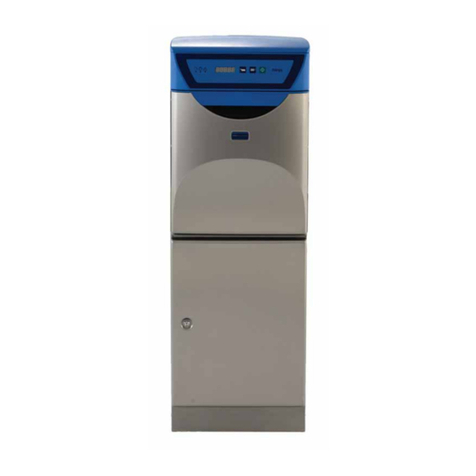
Arjo
Arjo Ninjo User manual
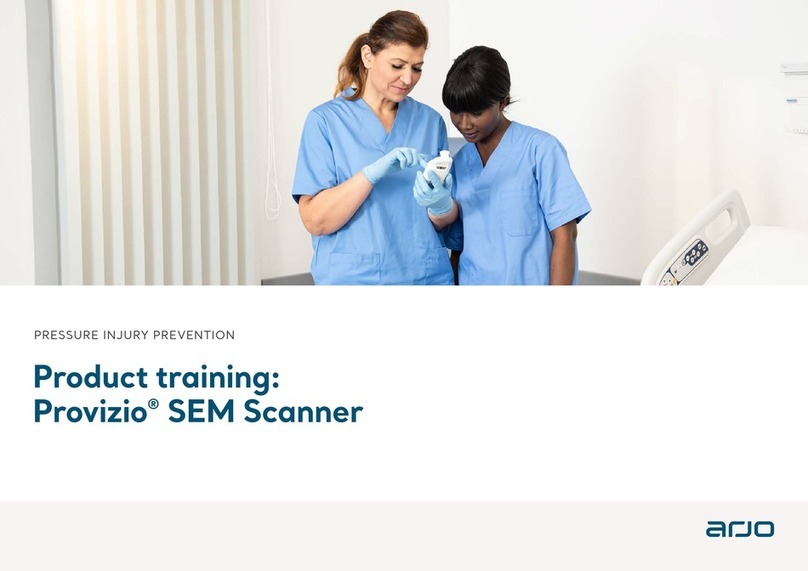
Arjo
Arjo Provizio SEM Scanner User manual
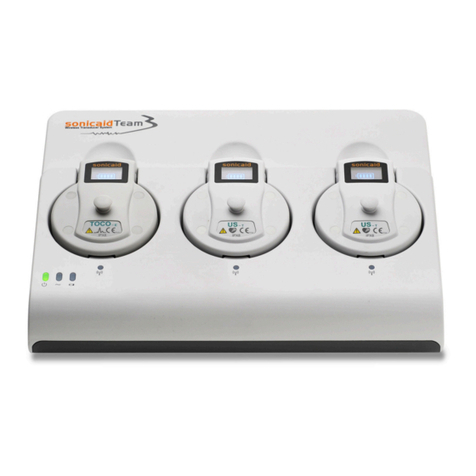
Arjo
Arjo HUNTLEIGH Sonicaid Team3 User manual

Arjo
Arjo Alpha Active 4 User manual
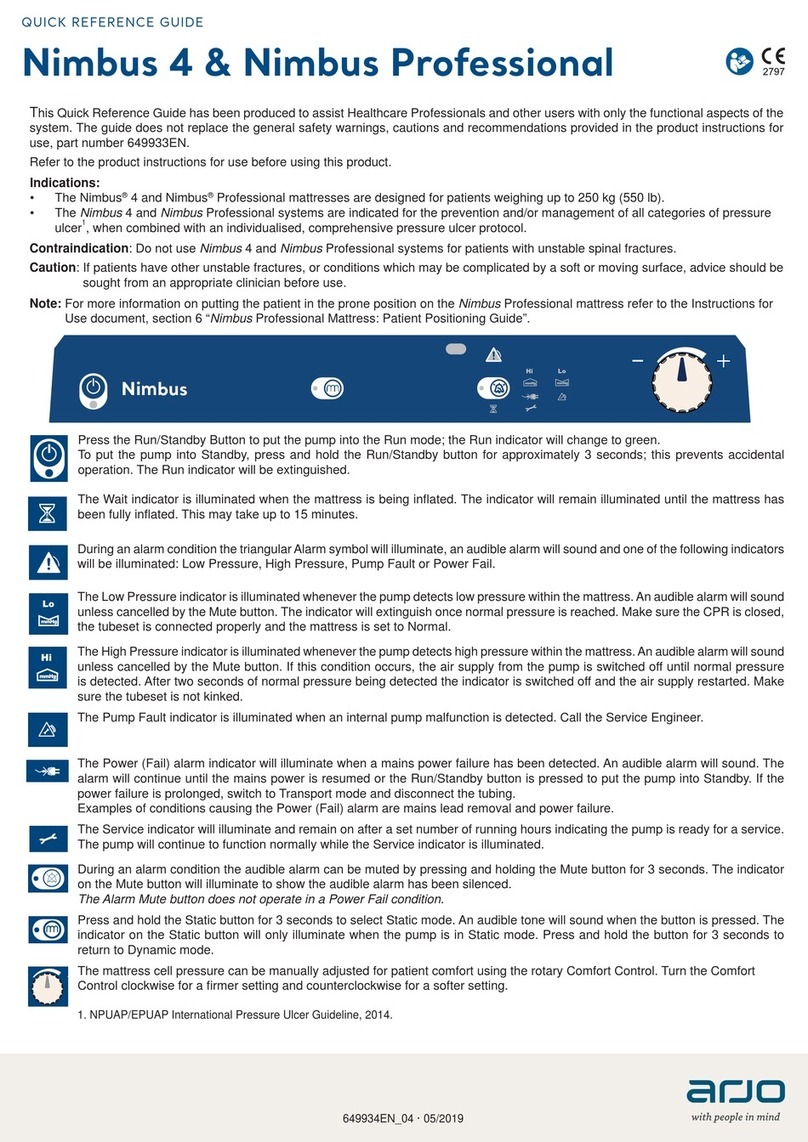
Arjo
Arjo Nimbus 4 User manual
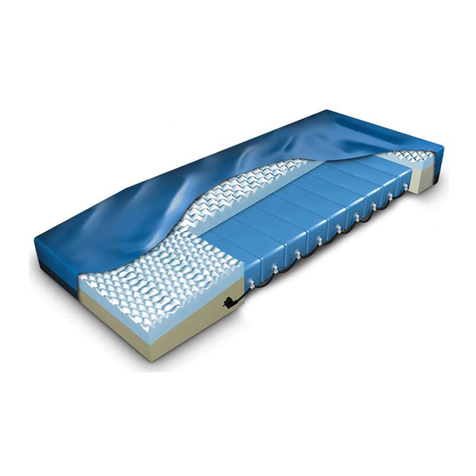
Arjo
Arjo AtmosAir 4000 Series User manual
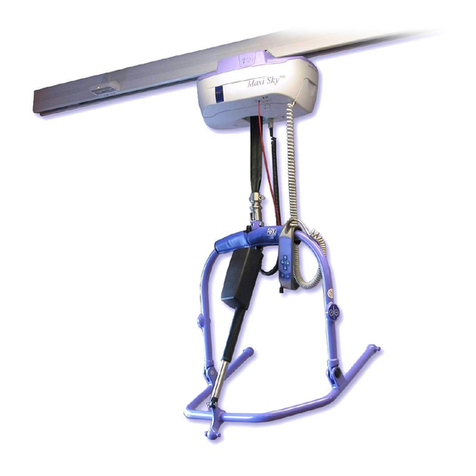
Arjo
Arjo MAXI SKY 600 Installation guide
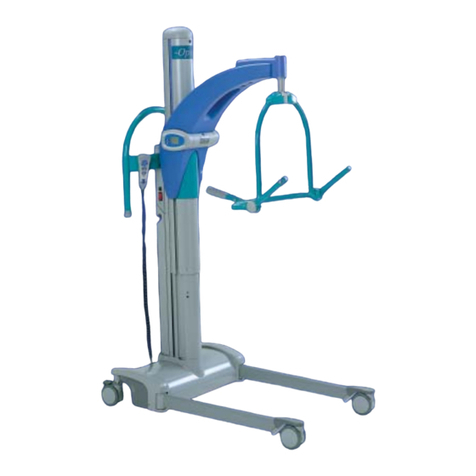
Arjo
Arjo Opera Installation guide
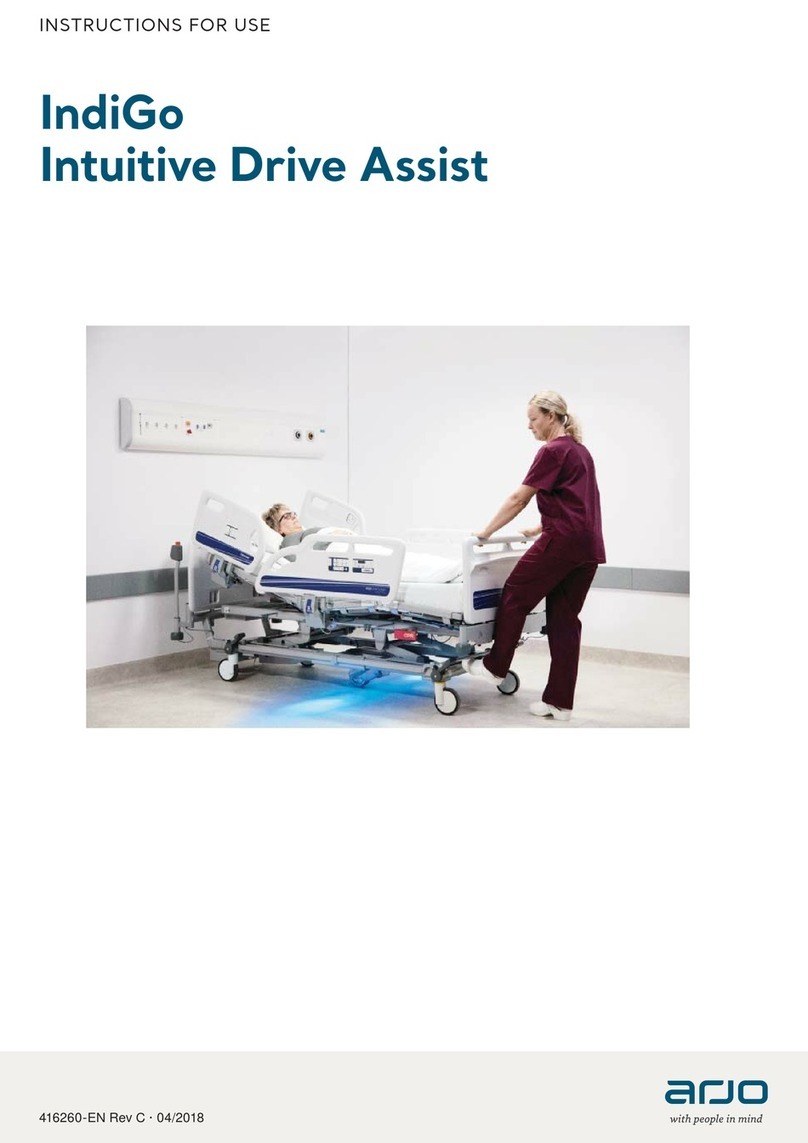
Arjo
Arjo Assembly instructions User manual
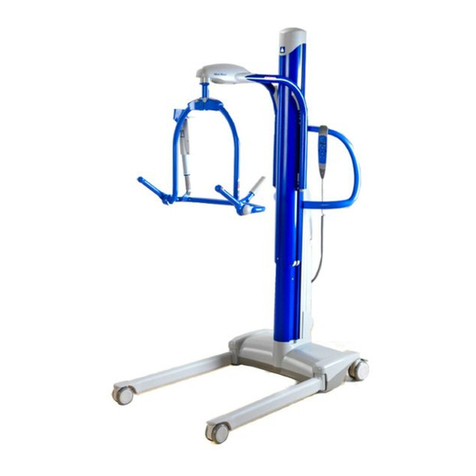
Arjo
Arjo MAXI MOVE Operating instructions
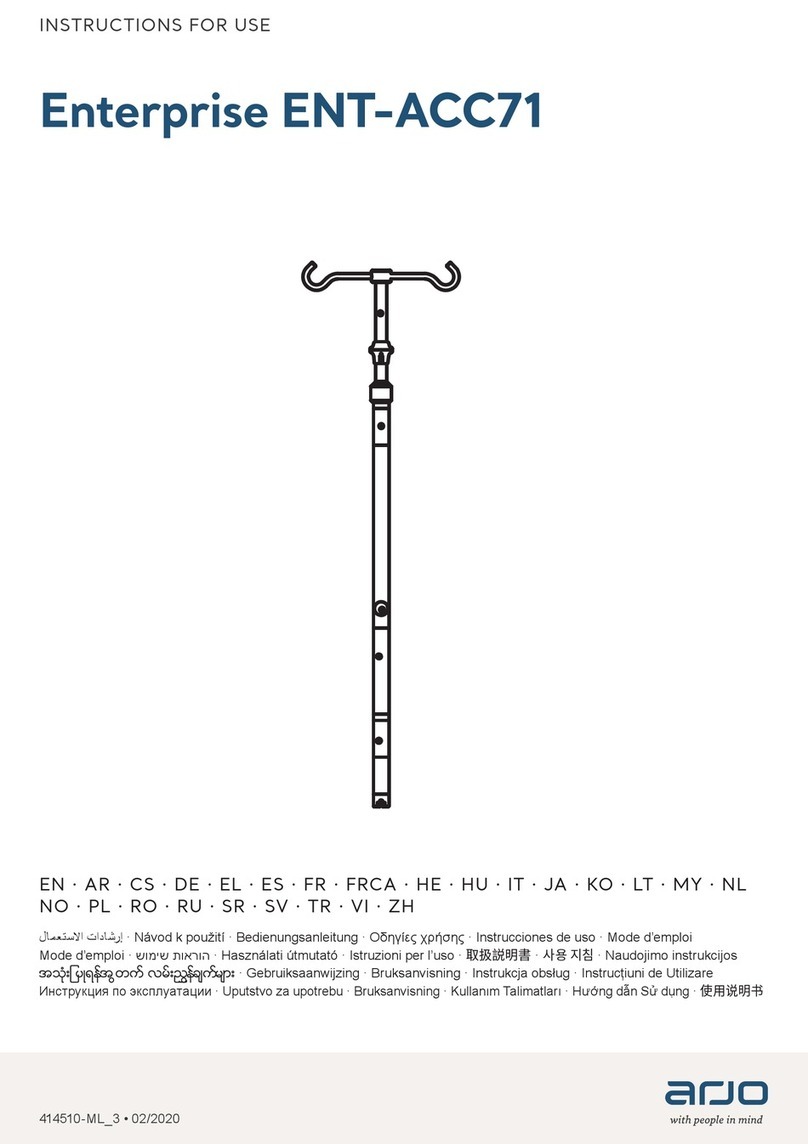
Arjo
Arjo Enterprise ENT-ACC71 User manual
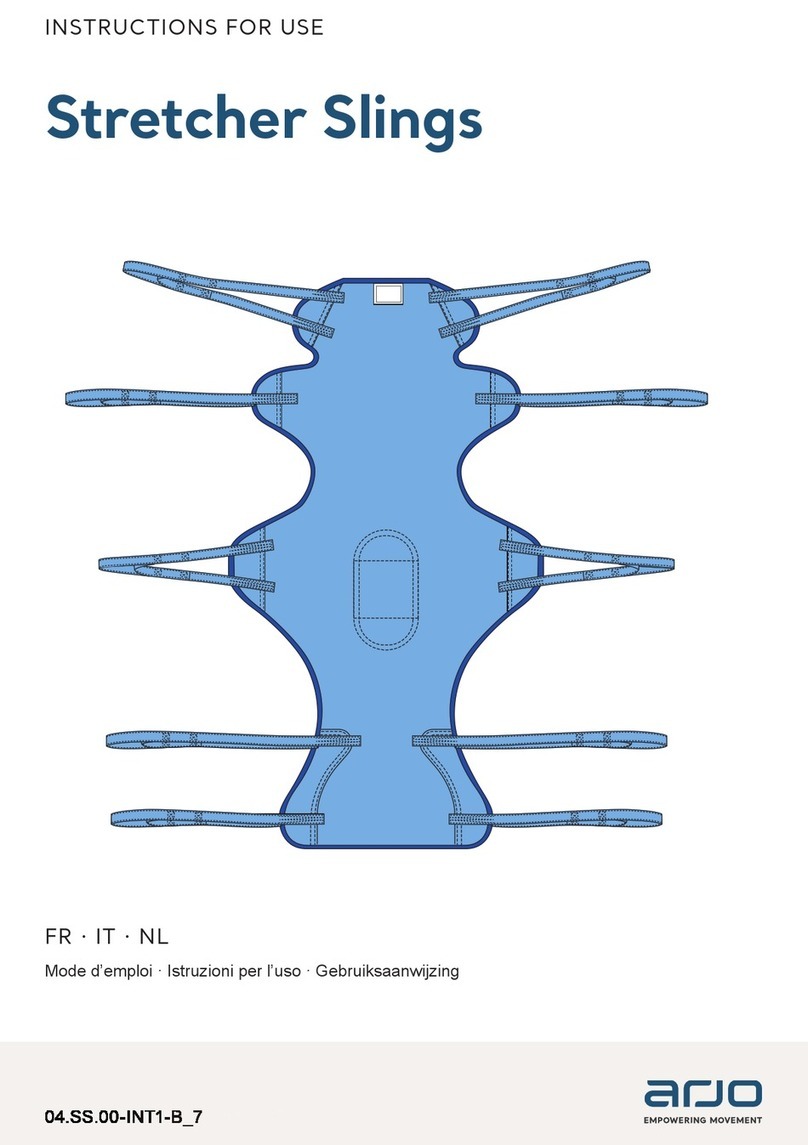
Arjo
Arjo Stretcher Slings User manual
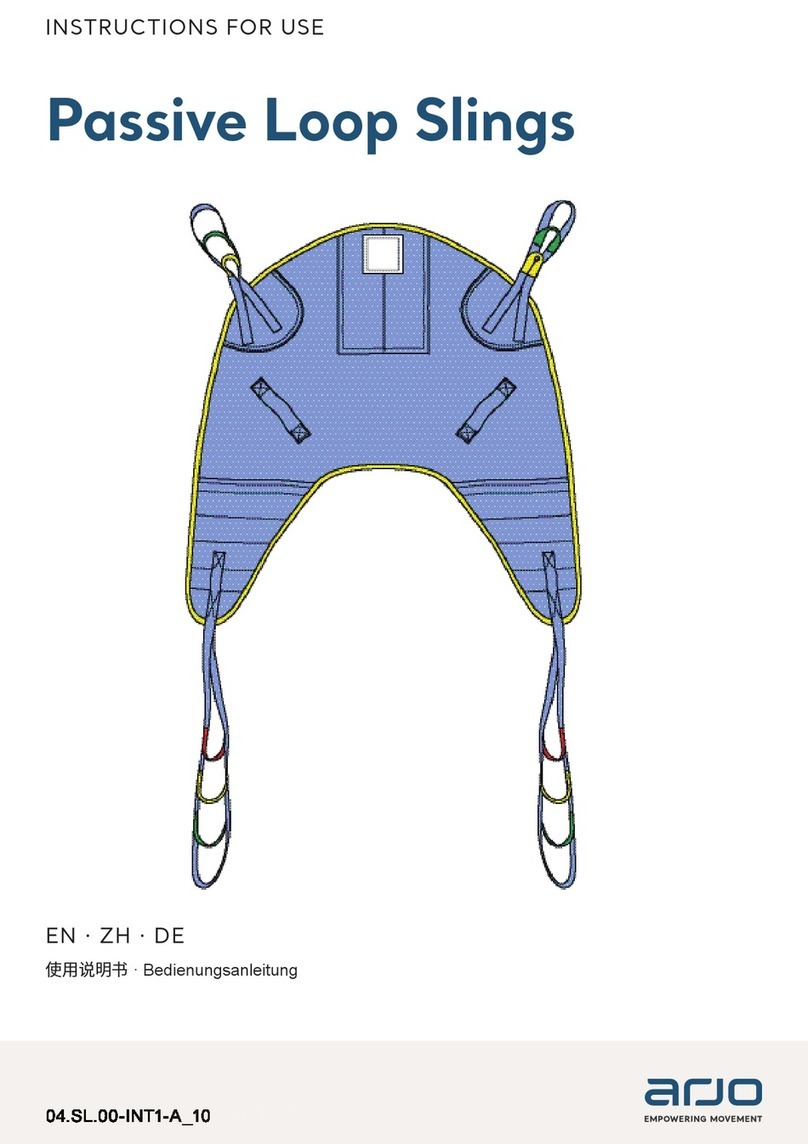
Arjo
Arjo MLAAS2000 User manual
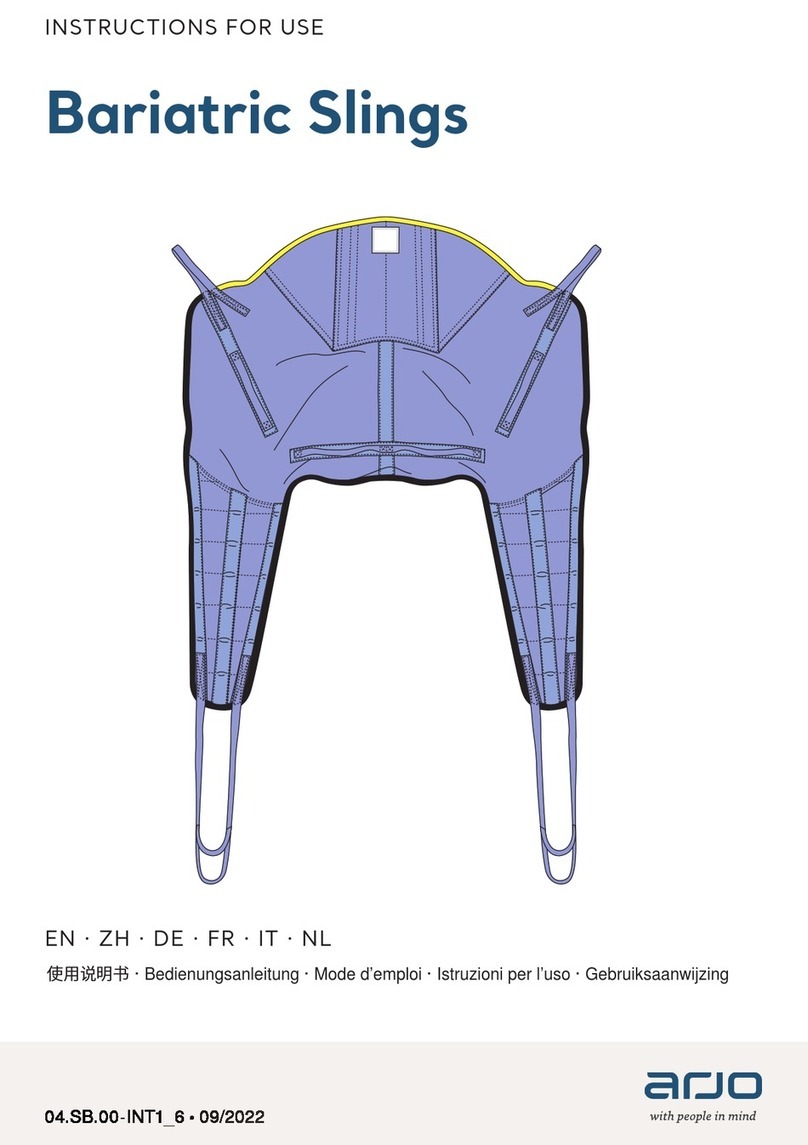
Arjo
Arjo MAA8000 User manual
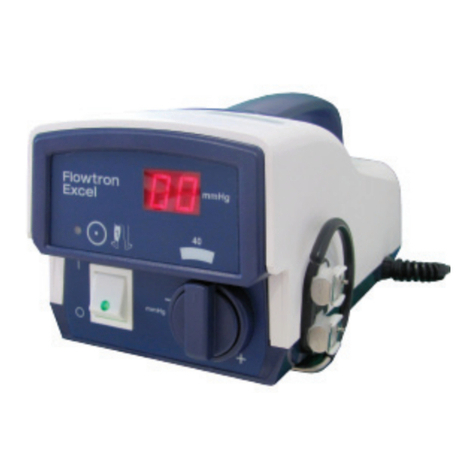
Arjo
Arjo Flowtron Excel User manual
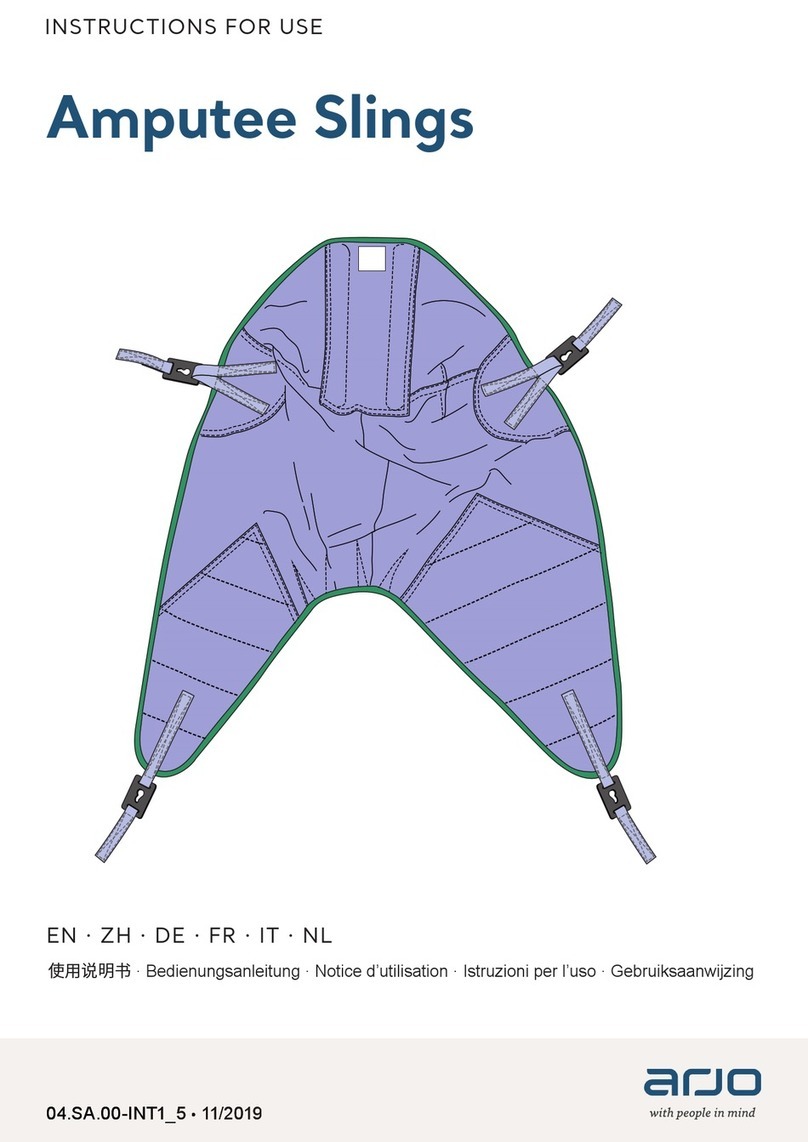
Arjo
Arjo MAA2080M User manual
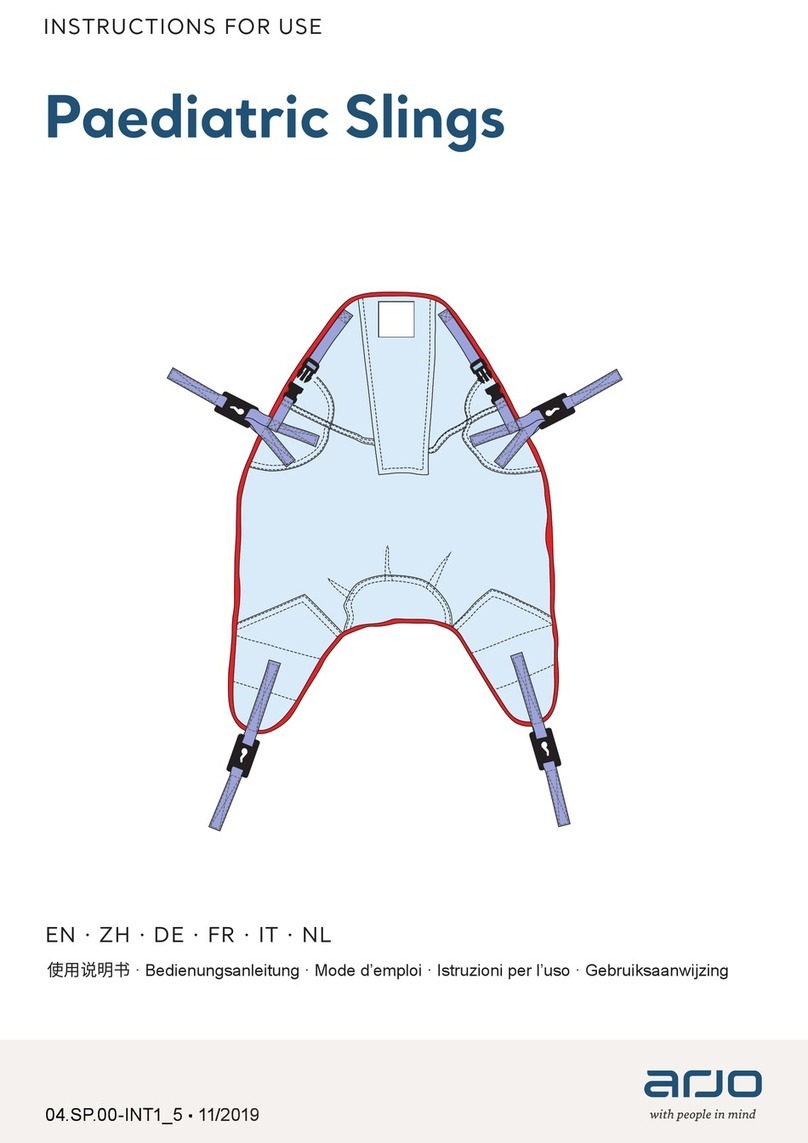
Arjo
Arjo MAA4020M User manual

Arjo
Arjo Sara 3000 User manual
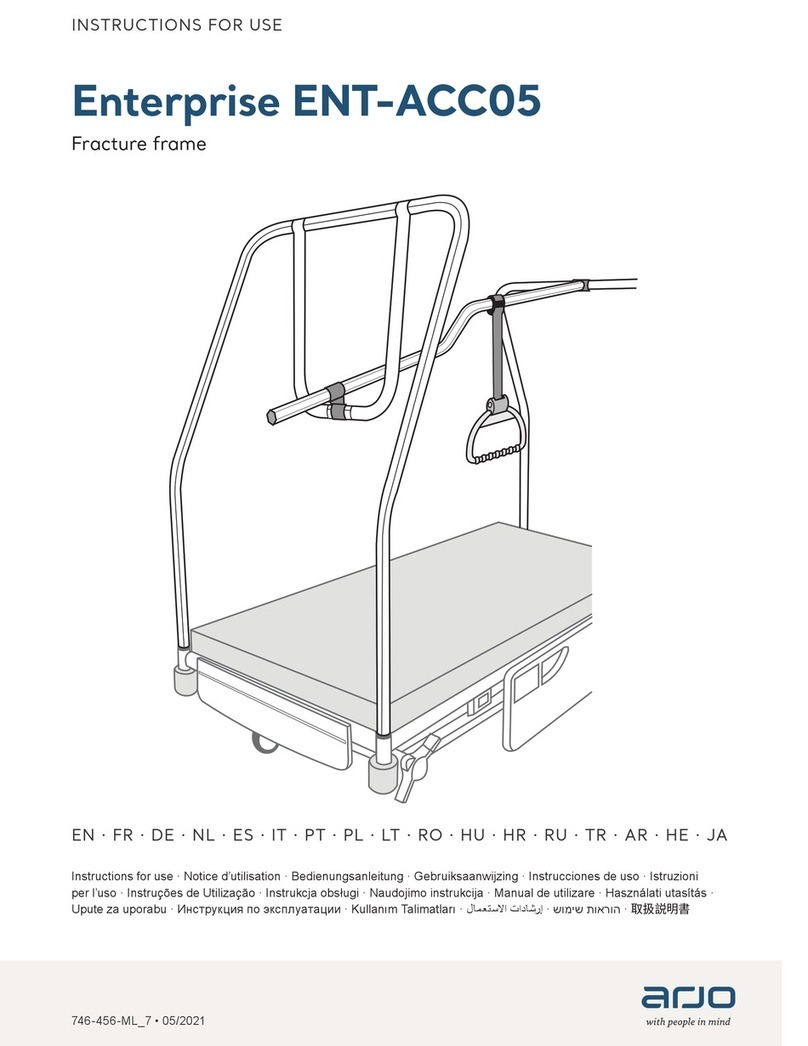
Arjo
Arjo Enterprise ENT-ACC05 User manual

